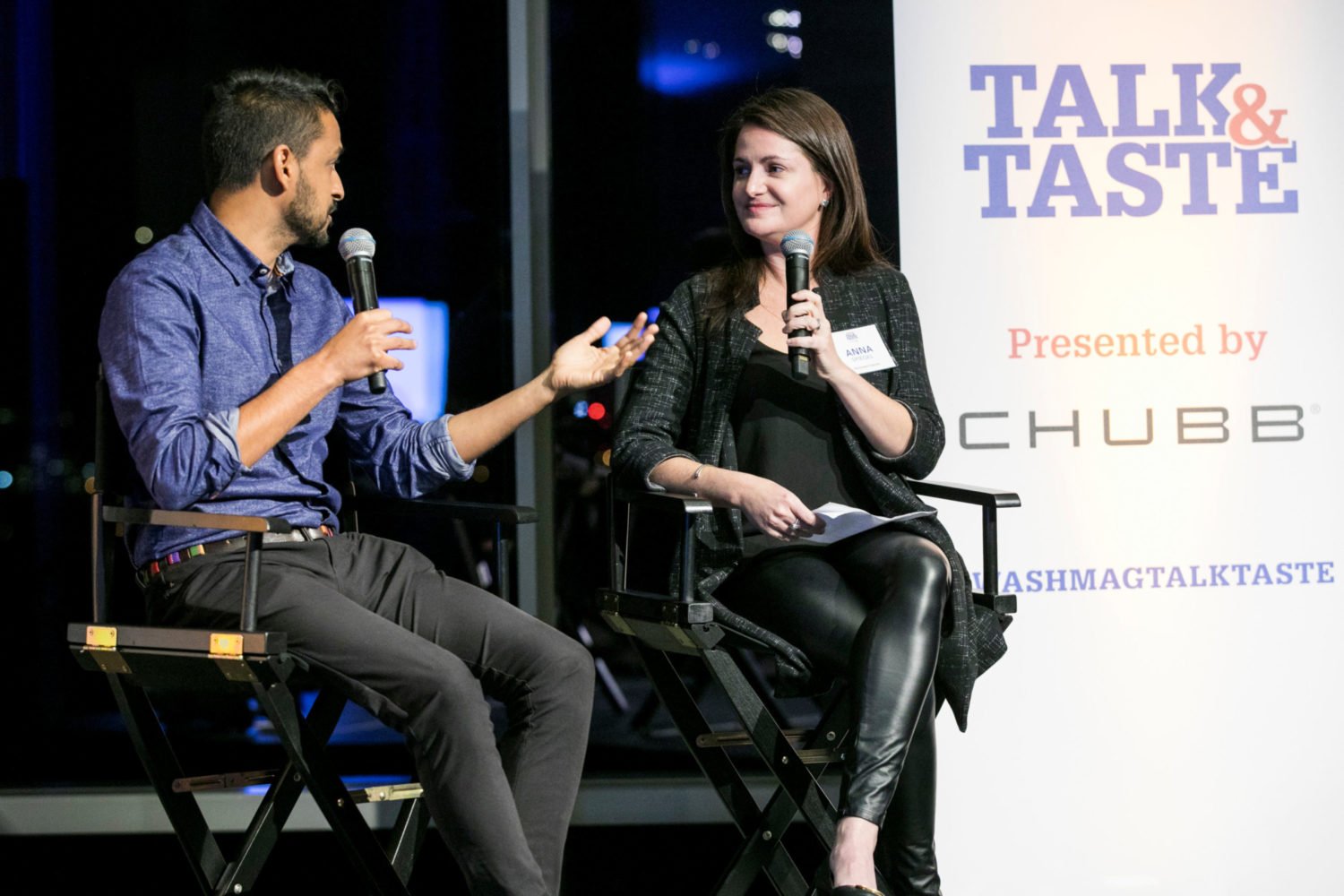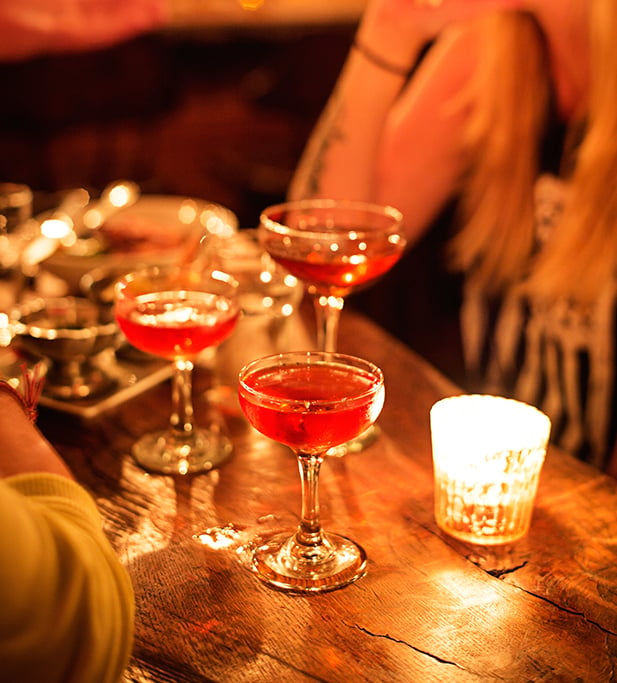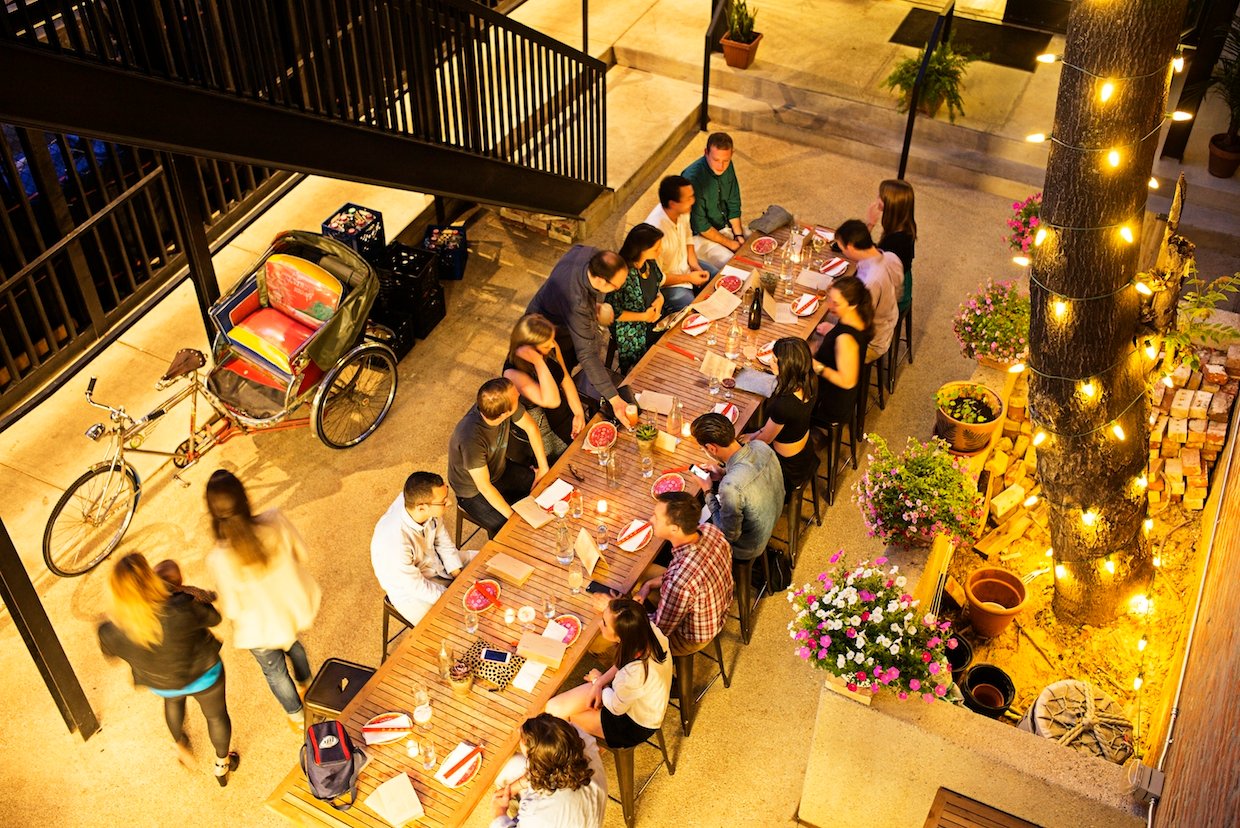
On Monday, the James Beard Foundation will hold its annual gala, a lavish, Oscars-like celebration of the industry in which chefs and restaurants around the country, and at every level of ambition, are recognized for their accomplishments, longevity, popularity, and, though some connected with the awards might not like to admit it, hotness.
No matter the outcomes, to be revealed with the dramatic and portentous reading of names at a podium, it won’t be a triumphal moment for DC.
The city’s food scene snagged only two nominations when finalists were announced in late March — for Outstanding Baker (Mark Furstenberg, of Bread Furst) and Rising Star Chef of the Year (Erik Bruner-Yang, of Toki Underground). The list of categories from which DC was absent was long, including four of the most coveted awards in the industry: Best New Restaurant, Outstanding Chef, Outstanding Restaurant, Outstanding Restaurateur.
The unkindest cut came in the category of Best Chef: Mid-Atlantic, where the five finalists included three chefs from Philadelphia and two from Baltimore (Spike Gjerde, of Woodberry Kitchen, and Cindy Wolf, of Charleston).
It was this glaring omission in a category the city ordinarily is abundantly represented in that sent so many foodies to Twitter and Facebook and food blogs to express their dismay. “Why no love for DC??” a reader emailed me that morning, the first of many queries I fielded on the subject.
I wasn’t able to answer that question then.
I can now.
It’s not a simple answer, and I doubt that most Washingtonians are going to want to hear it, especially not the chefs and restaurateurs and GMs who will be chewing through it like a piece of hard taffy in the weeks and months to come.
But before I take you there, I want to back up for a moment and, as they used to say in algebra class, show you my homework.
The day the nominees were announced, I took an out-of-town food writer friend (and Beard judge) to Bill White’s Fish in the Neighborhood, a righteous taste of old-school, working-class DC in a city that is becoming younger and more white-collar by the minute.
Over fried porgies we talked about the intersection of cuisine and culture for the better part of two hours.
My friend was interested to learn of the incongruities of new DC and old, of a cosmopolitan food culture and an indigenous, simpler one that few people in the media talk about.
This was our starting point, but eventually we came around to talking about food more broadly. Preoccupied that morning with the Beard shutouts and the agony it seemed to have caused in the local foodie sector, I asked him how the city was perceived as a food town. Initially, he begged off, claiming that he hadn’t spent enough time here to know, but when I pressed him a little — because he does know the city — he told me what he felt was lacking from the scene. He didn’t speak about a dearth of award-winning or TV-sanctioned chefs. His answer had nothing to do with certain cuisines or even with certain kinds of restaurants. What was lacking, he said, was “an identity.”
I was curious to know whether this view was an aberration or whether it represented a consensus, and so, for the next month, I sought out and interviewed 8 other prominent food writers and food critics from around the country in an attempt to get a read on how DC is regarded from without. (From within, of course, it is practically an article of faith that the food scene is exciting and vibrant and important.)
A few were initially reluctant to answer my questions, but I assured them that it was not necessarily important, for my purposes, that their responses flowed from actual, hard data. I said that I was just as interested in what they perceived from afar, and what they heard among their colleagues, because perception often matters more, sadly, than reality when it comes time for giving awards and compiling guides, and anyway, reality is an awfully hard thing to measure. Some requested anonymity, citing their high profiles; I said I didn’t mind shielding them, if, in return, they agreed to respond with candor and honesty.
I began by asking each of them what word or phrase they would use to describe the city’s food scene.
It was telling that so many reached for an -ing word. “Growing,” said one. “Improving,” said another. “Getting there,” said a third. A city, in other words, that is in process, as opposed to a city that has arrived.
Only two of the eight said that DC deserved a spot in a list of the Top 10 food cities in the country. One suggested it belonged at No. 13 or 14. Another guessed No. 16.
Many said that smaller cities such as Charleston, New Orleans, and Portland are more interesting and exciting, with some telling me that they looked forward to eating in these cities from the moment they stepped off the plane. Restaurants, one told me, are “a secondary consideration for me in DC. I think to myself, ‘I want to hit a few museums and wander some of the monuments and then…hmm, wonder what’s fresh and interesting in the restaurants here lately?’”
It became clear to me from these interviews that to speak of a Top 10 was somewhat misleading, because most agreed that there was a clear first tier of food cities — New York City, San Francisco — with a second, more distant second tier made up of perhaps 5 or 6 cities, beginning with Los Angeles or Chicago. So even those who were more bullish on DC — who thought it belonged in the top 10, even if at 9 or 10 — were still of the belief that it’s a third-tier food city.
Though every writer and critic I spoke with was well aware of the success of Rose’s Luxury and Fiola Mare, and of GQ’s recent roundup of the best restaurants in America that ranked them No. 1 and 4, respectively, this splashy attention was not enough to move them away from their essential view that DC is a collection of great restaurants without a real center — no dish or cuisine or tradition that anyone could point to and say, Ah, yes, that’s very distinctly Washington, in the way that you could, easily, with New Orleans (Creole cooking, gumbo), Charleston (low country, an abundance of great local fish), Portland (artisans, bakers, food trucks).
Mused one critic: “It’s interesting that Baltimore, just 40 miles away, is an inferior city to DC in almost every way I can think of but in its food identity. With the whole Maryland crab and seafood culture, Charm City essentially has a culinary mascot. DC’s identity as the country’s political epicenter far overshadows its restaurant reputation.” This idea was echoed by another writer: “The regions on which DC could claim to draw culinarily already have their own emerging epicenters. Baltimore and Richmond are forging strong, coherent culinary identities right now.”
At the same time that none could think of a tradition or dish to associate with the city, none could point to a trend that started in DC, either.
So here it was again, the notion of identity that my friend had spoken about at Fish in the Neighborhood. In the eyes of the tastemakers, DC is not small enough or rooted enough to have identifiable, sustaining traditions or foods. And it’s not innovative enough to have actually birthed anything.
A critic who has visited the city many times over the past few years characterized the city as “one of those places where people visit and feel surprised about how accomplished and forward-thinking many of the best restaurants are. But, to me, DC in the minds of food lovers remains a place where great restaurants are seen as an event rather than an expectation. You hear about a place like Little Serow or Rose’s Luxury and it feels like a game-changer in DC, rather than the latest in a constant succession of impressive, groundbreaking restaurants in New York or on the West Coast.”
I asked him later, via email, to elaborate more on these ideas when he had a moment to reflect. I’ll quote his response at length:
“As fond as I am of DC, I think it lacks two of the main drivers for cities (beyond New York, which has everything) that help create a standout culinary reputation: sense of place or a driving culture/idea. By sense of place, I’m thinking of Los Angeles’ sweeping diversity, or the pristine seasonal bounty beloved by chefs in San Francisco, or the Lowcountry abundance that informs Charleston’s restaurants. And by culture, I mean that Chicago is a huge city in the Midwest so of course it will have a dynamic scene as people’s interest in food has grown. And culture combined with sense of place, I think, is part of what has made the South such a culinary fascination in the last few years. DC may be below the Mason/Dixon line but beyond geography it has very little public Southern identity.
“By culture I’m also thinking of cities with entrenched immigrant communities that enrich the dining scenes immeasurably. DC has this, but by their virtue of their mammoth metropolitan areas I think cities like Houston and Atlanta have bigger reputations for the wealth and concentration of their global eats.
“And by a city with an ‘idea’ behind its food identity I suppose I mean a proven reputation, such as: ‘As long as it’s good, any kind of restaurant can thrive in Portland.’ That’s an idea with a lot of examples behind it: Portland has been an incredible place to eat over the last decade for the sense of discovery among its finest restaurants.
“The notions about DC and its restaurants are vague. I don’t know if there’s an opportunity to develop a ‘Mid-Atlantic’ food identity: Modern chefs don’t like to be pigeonholed. I think it’s why an idea about a restaurant serving historic recipes sounds wonderful in theory but then doesn’t fly. The chef either can’t reconcile the dishes for modern tastes, or the chef gets bored by the whole approach and wants to add kimchi to crab Imperial.”
I asked him whether an identity would always be elusive because of how transient the population is and how lacking in traditions the city is and has been, or whether the potential existed for the city to grow into the kind of food town that might lead him and his fellow tastemakers to look forward to visiting and eating, and, one day, casting more ballots come Beard time.
I don’t think his response is the only solution to the problem, but it’s an interesting one, and a viable one — one that, absent a sudden surge of places like Fish in the Neighborhood, might just give the city the sense of place it so obviously lacks in the minds of so many. “Perhaps the best DC can do is to better emphasize the international riches of its restaurants,” he wrote. “I look at your 100 Very Best Restaurants list and see Indian, Thai, Greek, and Japanese as strong contenders among the expected American and Italian entrants. Those are the places I’ll be most curious to try next time I’m in town.”
OtherWise is Washingtonian food critic Todd Kliman’s new weekly column. Sometimes it will be about food.













